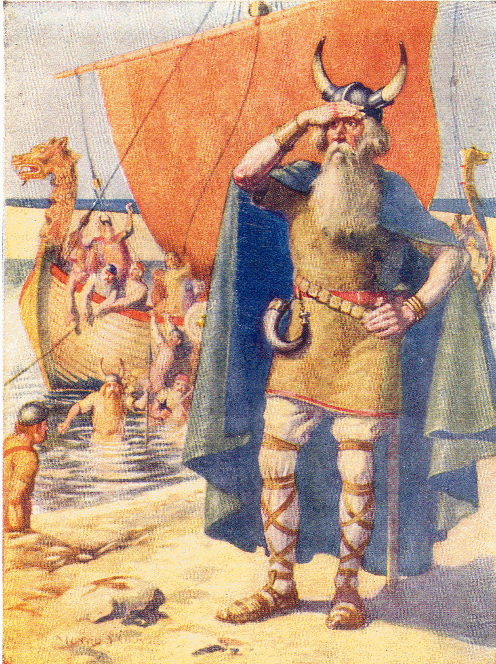
Archaeologists from University of the Highlands and Islands Archaeology Institute, Rousay residents and students recently discovered Viking drinking hall, where not everyone was allowed in northern Scotland.
Archaeologists found the remains of the drinking hall during an excavation at Skaill Farmstead, on the island of Rousay, Orkney.
As per the archaeologists, the drinking hall's doors seem to have been open from the 10th to the 12th centuries only for the high-status Vikings. But after so many years, from the historic farm complex researchers found only ancient stone structures, a few artefacts, including a fragmented Norse bone comb, pottery and a bone spindle whorl and an old trash heaps, known as middens.
This is not the first findings as earlier structures have been found below the present farm during previous seasons and this summer, the team explored more of the Norse phases of the site.
The hall was discovered after the archaeologists came to know that the walls extending from below a known settlement were actually part of 43-foot-long Norse building.
These walls were almost three feet wide and 18 feet apart and the archaeologists noticed stone benches on the side of the building. The hall is oriented down the slope towards the sea, said archaeologists.
As reported by Archaeologyorkney.com, this discovery suggests the tantalising evidence for the earliest phases of habitation on this farm and settlement mound which may well have been inhabited for more than 1000 years.
"It provides another piece to the 5000-year jigsaw along this archaeology rich stretch of coast at Westness on Rousay – the 'Egypt of the north'."
The involved archaeologists have been conducting excavation programs for a while and they often shifting through the middens to learn more about the old farming and fishing culture, as well as the food consumption tendencies of the people who used to live there several years ago.
Project co-director Ingrid Mainland, an archaeologist at the University of the Highlands and Islands said that the team has recovered "millennia of middens, which will allow us an unparalleled opportunity to look at changing dietary traditions, farming and fishing practices from the Norse period up until the 19th century."
Project co-director Dan Lee said that the exciting news is that this season the team has found the hall at Skaill. But "You never know, but perhaps Earl Sigurd himself sat on one of the stone benches inside the hall and drank a flagon of ale!" he added.
This excavation program was funded from Orkney Islands Council Archaeology Fund and the Rousay, Egilsay and Wyre Development Trust.
As per the history, Vikings came from the Scandinavian countries of Norway, Denmark, and Sweden and became popular for being tactical warriors, smart traders and daring explorers.
Earlier, a new study revealed that an archaeology team found a few graves and several signs which indicated that those dead people were residents of western Europe or northern France and they were Normans, who earlier used to live in Scandinavia and they are known as the descendants of the Vikings.









